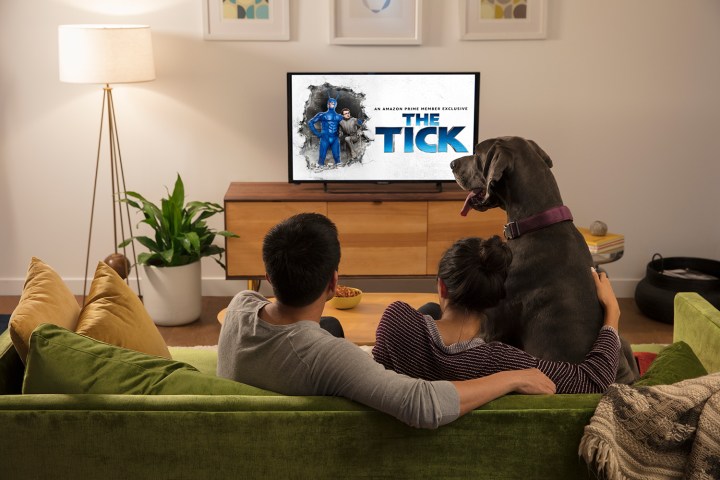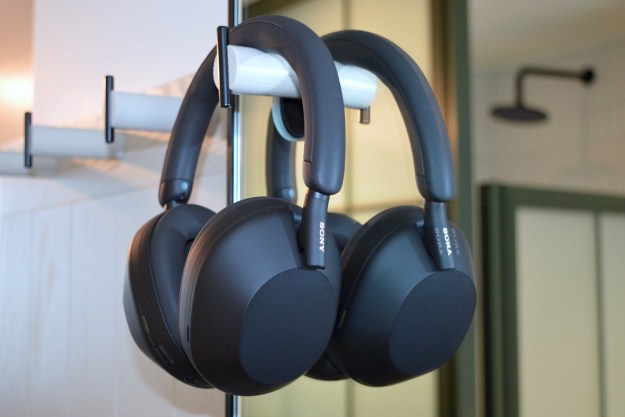Buying a new TV is often an exciting experience for the entire household (unless it’s because your remote went flying through the screen of your old set). Best of all, thanks to major strides in resolution, upscaling, and backlighting, we can sit closer to our TVs than ever before — without that dreaded pixelation. Do keep in mind though that regardless of the brand you choose, it’s still important to buy an appropriately sized TV for the room you’ll be watching it in. Yes, you’ll notice fewer defects in bigger-sized screens these days, but a large screen in a small room can still become overbearing, especially for your eyes.
With all that being said, let’s take a look at what to consider when picking out the right-sized TV for your viewing space.
How to calculate TV size for a room
Before you decide whether you’re looking for an LCD TV, OLED TV, or Ultra HD TV, you’ll need to decide where you want your television to reside. Once you’ve chosen the location, measure the height, width, and depth of that spot (there may be limitations due to the size of an entertainment center or the amount of space on a wall). Later, when shopping, you can match this up with the measurements of the television itself, not its screen size, to make sure it will fit. You’ll find that some TVs have footprints that are physically larger than others of the same screen size, so always look at the dimensions to see whether it will slot into the space available.

How wide is the stand?
The second size-related consideration is the television’s attached stand. If you aren’t going to mount your new TV on a wall, this will play a big part in how much space it takes up on your console table, and many newer TVs have feet at the far edges. You need to ensure that wherever you plan on placing the television is wide enough to accommodate the stand. You’ll want to be strict here, too. Often, people think it’s safe to let the corners overhang, forgetting that it’s been designed to rest on a flat surface. Fail to do so, and the faintest breath of wind could send the whole thing tumbling over.
For situations where you can’t wall-mount your TV and can’t see yourself parting ways with a cherished piece of home theater furniture, you can always opt for a universal TV stand. Similar to a standard TV wall mount, VESA-certified arms are screwed into the back of your TV, while a mounting bracket is fixed to the base of the stand. Many universal stands also will tilt and pivot up and down, as well as left to right.
How far away will you be?
Next, think about where you’ll be sitting in relation to the TV. There are TV viewing distance calculators (here is another calculator) that recommend a TV screen size based on your seating distance. If you don’t want to bother with an online calculator, there’s a simplified calculation that you can do to work it out yourself: Measure the distance from your seat to the television in inches and multiply by 0.84. This should give you the ideal screen size and the right size for your space.
This method isn’t perfect, of course. For example, if you are sitting 8 feet from the TV, the calculation calls for an 80-inch screen, and that’s just not realistic for most of us. Most living rooms will do best with at least a 50-inch screen size and, of course, taste and style are going to factor in heavily, as will the viewing angle. You can technically go as big as you like and purchase a larger screen size — just make sure you’re sitting more than 4 feet from the TV itself, and you should be fine.
Measuring in field of view

Field of view refers to how much space the display takes up compared to what else your eyes are noticing. In a theater, for example, the field of view is very large because there’s not much else you can see. In a home theater, the field of view tends to be smaller, and larger based on where you place your seating, along with the height of your tv.
Experts generally recommend a field of view around 30 to 36 degrees. For a 50-inch TV, that would mean sitting around 5.6 feet away. If you have limited space, you can always use field of view in reverse to pick the size of your TV based on where people will be sitting.
Don’t confuse field of view with viewing angle, which shows how easy it is to see the TV from the side. Viewing angle depends on the panel type, but size can also help.
Best size TV for gaming
Remember, when gaming it’s common to sit a bit closer to the TV than when watching a movie. If your TV is going to be used for a gaming hub, it may not have to be as large. Recommendations are still around 40 to 55 inches, but if you know that you’ll be sitting closer to the screen, it’s alright to adjust those numbers down. Remember, the most popular PC monitors for gaming are around 24 to 27 inches because PC gamers are so close to the screen.
Size versus quality
If you’re trying to maximize screen real estate on a tight budget, you’re going to have to sacrifice picture quality. As such, we recommend — as per our comprehensive TV buying guide — striking a balance between the two factors for longtime enjoyment. So instead of going for that massive 65-inch 4K TV from an up-and-coming brand that’s on the shelves for just $500, consider opting for the smaller 55-inch, big-name model next to it for $550. Chances are, it has a far better screen and better resolution, and that’ll result in a much more immersive viewing experience, even more so when using HDR. Plus, 55 inches is still not considered a small TV!
You’ll also want to keep in mind the types of content you’ll be viewing. If you’re a Blu-ray enthusiast or 4K streaming connoisseur, your HDTV is constantly displaying the most high-fidelity image your set can deliver. If your larger TV screen size of choice is closer to 80 inches or you’ve opted for a 55-inch but you’re sitting closer to the screen, you won’t notice much distortion in the image. The other side of that coin is that if you’re a big watcher of older DVDs, VHS, and home video formats but your living room is rocking a TV with the same TV dimensions as above, you’ll notice more distortion and imperfections. Know what you like to watch, and how much you like to watch what you like.
Editors' Recommendations
- What is Dolby Vision? The dynamic HDR format fully explained
- How to know if you’re actually getting Dolby Atmos sound
- The best TV brands of 2023: from LG to TCL, which should you buy?
- The best wireless headphones for 2023: which should you buy?
- What’s new on Hulu in March and what’s leaving soon








